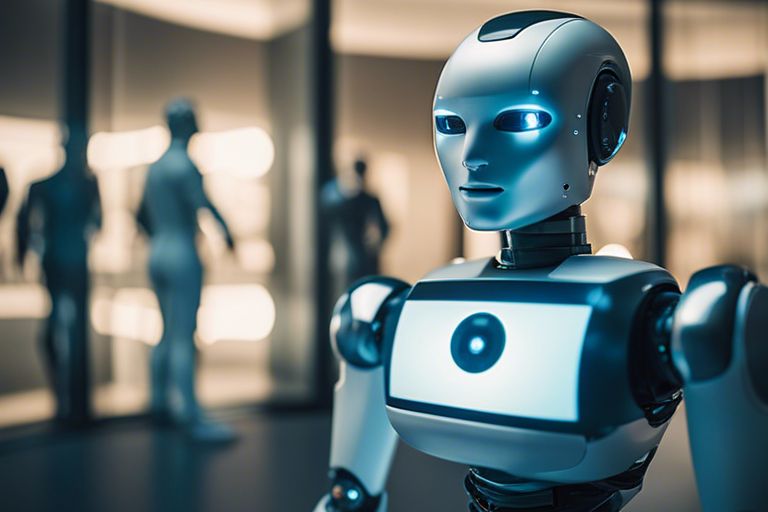Virtual Assistants – The AI-Powered Game-Changers In Emerging Technologies
Revolutionizing the way businesses operate, virtual assistants are AI-powered tools that are transforming the landscape of emerging technologies. These digital aides offer efficiency, productivity, and cost-effectiveness to companies across various industries. By utilizing natural language processing and machine learning algorithms, virtual assistants can interpret and respond to human queries, paving the way for seamless interactions between users and technology. However, while their convenience and accessibility are undeniable, these virtual assistants also raise privacy and security concerns due to the vast amount of personal data they handle. Understanding the capabilities and risks associated with virtual assistants is crucial for businesses looking to leverage these cutting-edge technologies.
Understanding Virtual Assistants
Definition and Functions
A virtual assistant is an AI-powered software program that can perform various tasks and services for individuals or organizations. These tasks can range from answering basic inquiries and managing schedules to more complex activities like data analysis and predictive modeling. Virtual assistants are designed to mimic human interaction and provide personalized assistance to users, ultimately enhancing productivity and efficiency.
Functions of virtual assistants include speech recognition, natural language processing, and machine learning algorithms. They can adapt and learn from user interactions to improve their performance over time. Virtual assistants are commonly integrated into devices such as smartphones, smart speakers, and computers, offering users convenient access to information and services.
Evolution and Technological Advances
With the rapid advancement of artificial intelligence and machine learning technologies, virtual assistants have evolved significantly over the years. Early virtual assistants were limited in their capabilities and often struggled to understand complex commands. However, with advancements in natural language processing and deep learning, modern virtual assistants like Siri, Alexa, and Google Assistant can now comprehend and respond to a wide range of commands.
Understanding user intent, context, and emotions has become a key focus in the development of virtual assistants. By leveraging big data analytics and neural networks, virtual assistants can provide more accurate and tailored responses to user queries, leading to a more personalized and engaging user experience.
Understanding the evolution and technological advances in virtual assistants is crucial for organizations looking to leverage these AI-powered tools to streamline operations, improve customer interactions, and drive innovation in their products and services.
Applications of Virtual Assistants
In Business and Customer Service
Service industries have widely adopted virtual assistants to enhance their efficiency and customer satisfaction. These AI-powered assistants are programmed to handle customer queries, provide technical support, process orders, and even schedule appointments. By automating routine tasks, companies can redirect their human resources to more complex and strategic activities, thus improving productivity and overall performance. Virtual assistants can also offer personalized service by accessing customer data and providing tailored recommendations, thereby enhancing the customer experience.
Moreover, virtual assistants are available round the clock, ensuring that customers receive timely assistance and support at their convenience. They can handle a high volume of inquiries simultaneously, reducing wait times and improving response rates. With advancements in natural language processing and machine learning, virtual assistants can understand and respond to a wide range of queries, making them indispensable in today’s fast-paced business environment.
Personal Use and Lifestyle Management
Management of personal tasks and lifestyle activities has been revolutionized by virtual assistants. Individuals can utilize these AI-powered helpers to set reminders, manage calendars, create to-do lists, and even control smart home devices. Virtual assistants can provide valuable assistance in organizing daily routines, tracking fitness goals, and monitoring health metrics. By integrating with various apps and devices, they offer a holistic approach to personal wellbeing and time management.
For instance, virtual assistants can remind users to take medication, suggest healthy recipes based on dietary preferences, and track exercise progress. They can also help in setting financial goals, tracking expenses, and managing budgets. With their ability to learn user preferences and behaviors, virtual assistants become personalized companions in daily life, empowering individuals to achieve their goals and lead a more organized lifestyle.
Challenges and Considerations
Privacy and Security Concerns
To truly harness the power of virtual assistants, we must address the privacy and security concerns that come with entrusting sensitive information to AI-powered systems. With the potential for breaches and data leaks, organizations and individuals need to prioritize robust encryption protocols, secure access controls, and regular security audits to safeguard their data.
With the increasing reliance on virtual assistants for handling personal and business tasks, it is crucial to implement privacy regulations such as GDPR and HIPAA to ensure compliance and protect user data from exploitation or misuse.
The Future of Employment and Human Interaction
For businesses and employees, the integration of virtual assistants raises questions about the future of employment and human interaction. As AI continues to advance, there is a growing concern about the potential displacement of human workers by automation. For companies, finding the right balance between AI-powered solutions and human employees is key to maintaining productivity and fostering innovation.
For instance, while virtual assistants can streamline processes and enhance efficiency, they may also impact job roles and require upskilling or reskilling of employees to align with the changing demands of the workforce. Organizations must navigate this evolving landscape thoughtfully to leverage the benefits of AI technology while preserving the human element in their operations.

Exploring the Potential
Integration with Other Emerging Technologies
An integral aspect of AI-powered virtual assistants is their seamless integration with other emerging technologies. These virtual assistants can work in tandem with Internet of Things (IoT) devices, enhancing automation and convenience in smart homes and offices. They can also be integrated into augmented reality (AR) and virtual reality (VR) applications, providing users with personalized and immersive experiences.
Machine learning algorithms enable virtual assistants to adapt to user preferences and behavior, offering more tailored support and assistance. By integrating with blockchain technology, virtual assistants can ensure secure transactions and data privacy, further enhancing their utility in various sectors such as finance and healthcare.
Predictions for Future Developments
For the future, it is predicted that virtual assistants will become even more sophisticated and intuitive. They will be able to anticipate user needs and provide proactive assistance, blurring the lines between human and machine interaction. Additionally, advancements in natural language processing will enable virtual assistants to have more natural and context-aware conversations with users, enhancing the overall user experience.
Technologies such as quantum computing hold the potential to revolutionize virtual assistants, enabling them to process vast amounts of data at unprecedented speeds. This could lead to significant breakthroughs in AI capabilities, making virtual assistants even more indispensable in our daily lives.
FAQ
Q: What is a Virtual Assistant?
A: A Virtual Assistant is an AI-powered software program that can perform various tasks and services for individuals or businesses, such as answering questions, scheduling appointments, or providing information.
Q: How do Virtual Assistants work?
A: Virtual Assistants work by using natural language processing and machine learning algorithms to understand and respond to user queries or commands. They can access information from various sources to provide accurate and relevant answers.
Q: What are the benefits of using Virtual Assistants?
A: Some benefits of using Virtual Assistants include increased productivity, efficiency, and convenience. They can handle repetitive tasks, free up human resources for more complex activities, and provide 24/7 support.
Q: In what industries are Virtual Assistants being used?
A: Virtual Assistants are being used in a wide range of industries, including customer service, healthcare, finance, and education. They can streamline processes, improve customer interactions, and enhance decision-making capabilities.
Q: What are some popular Virtual Assistant platforms?
A: Some popular Virtual Assistant platforms include Amazon’s Alexa, Apple’s Siri, Google Assistant, and Microsoft’s Cortana. These platforms are integrated into various devices and applications, making them easily accessible to users.
![]()













